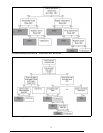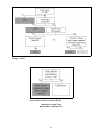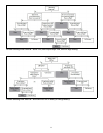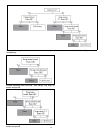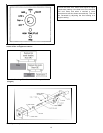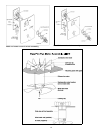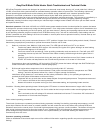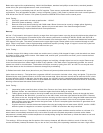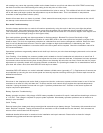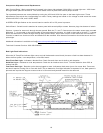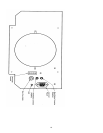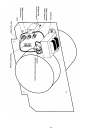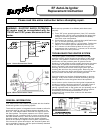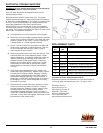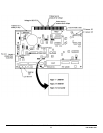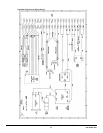1 7
trim settings may cause the opposite problem as the heater feeds to much fuel and allows the HIGH TEMP control stop
the feed to cool the stove. Best starting trim setting is the mid point or 9:00 o-clock.
High temp starts will also occur if the burn pot has additional fuel prior to start up. This additional fuel which is then added
too as the start cycle begins pushes the temperatures up as the heater starts. This is considered an temperature
overshoot as the temperature climbs quickly.
Heater will not start when run button is pushed - Check external thermostat jumper or remote thermostat as the unit will
not attempt a start unless this circuit is closed.
Run mode Troubleshooting:
Once the heater reaches the run mode it will continue operation by using the coals in the burn pot to light the pellets
continuing to fall. If the coal bed burns down at some point the pellets may not light and then the heater will shut down.
This is normally confirmed by finding the burn pot with unburned fuel and shut off. This can also happen if the hopper runs
low on fuel or the fuel bridges (hangs on the hopper sides).
Run mode problem generally are either operational or limits exceeded - Blocked Flue (loss of flue draft) or High
Temperature is exceeded. Blocked flue indication is a solid RED LED on the control panel and requires a recycle of the
heater to clear. This is for the operators protection as a blocked flue could cause a dangerous condition. Block flue most
likely is not fully blocked and will occur if the flue pipe is subject to high wind conditions or is blocked by ash. If this
happens during initial installation a corrective action to the flue system will be required. Check the installation manual for
flue recommendations.
Operational problems are generally related to ash build up in the burn pot or the heat exchange system and can be correct
by cleaning.
Over Feeding - Over feeding is a common problem and is related to a lack of combustion air rather than to much fuel. If
the heater is clean and seems to feed more fuel adjust the trim down to slow the feed rate. If the heater has been operated
for sometime since the last cleaning then shutting it down and cleaning will solve the over feed. Check the door for proper
adjustment as a partially closed door will cause reduced combustion air. Operating the heater for an extended time with an
open door will cause a shut down with RED LED and require a restart.
Immediate RED LED when a run mode is selected indicates a failed sensor (generally a T-1). Replacement of sensors are
accomplished by removing the rear access panel and normally requires removing the flue pipe. Review repair manual for
additional information.
Shutdown:
Shut down is the simplest mode as the feed is stopped and the fan continues to operate until the heater is cool. If the fan
continues to run after it is fully cold then the T-2 sensor and the main control did not register the required temperature
reduction. Unplug the heater to reset and run again. If problem persists then the T-2 sensor or the control system will
require component replacement.
Battery Operation Troubleshooting -
Battery operation requires a fully charge 12VDC battery capable of sustained 2 amp/hr. loads while maintaining a minimum
of 11.2 VDC. This voltage is required for proper system operation. Most battery operation problems can be traced to a
battery in pour condition.
Quick Testing
Remove battery from heater and charge overnight with automotive type battery charger. Test battery with automotive load
tester. Replace if required. Testing connections from terminals on rear of heater back to the harness. If all connects are
secure a main control board will be required.
Additional detailed information is contained in the installation and repair manuals. Please refer to these for in depth
troubleshooting guides and harness replacement.



